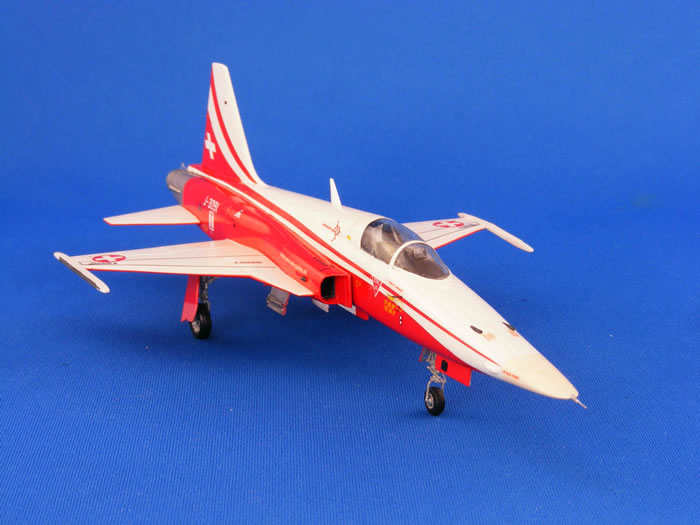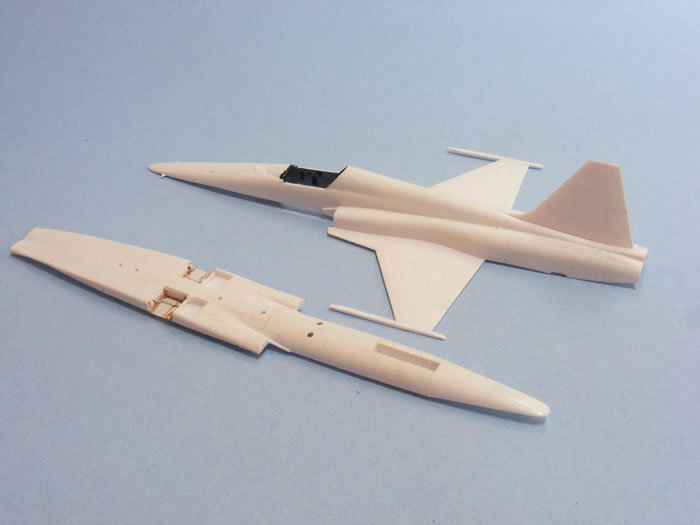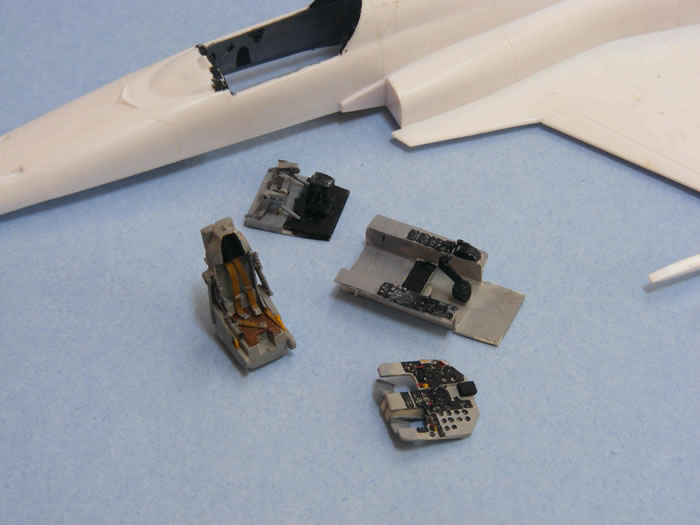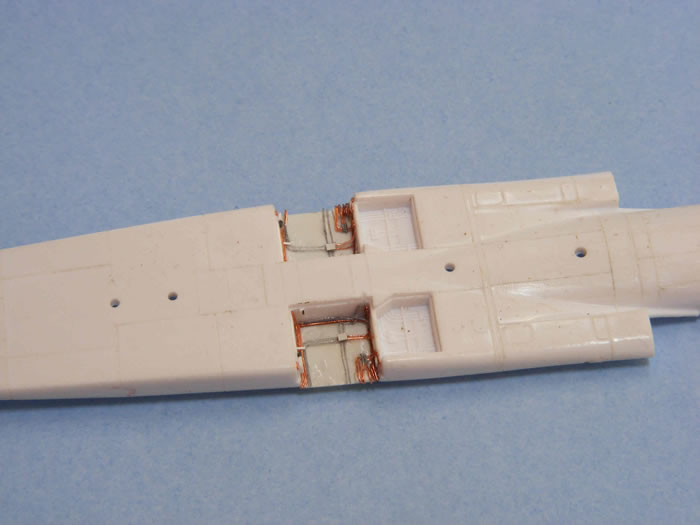Italeri's 1/72 scale
Northrop F-5E Tiger II
by Thomas Muggli
|

|
Northrop F-5E Tiger II |

Hobby Boss' 1/48 scale F-111C is available online from Squadron.com
When the F-5 was first produced in the 1960s, it was dubbed the “poor man’s fighter jet”. It got its nickname because Northrop developed the small fighter to be sold to third world countries that could not afford to buy top of the line warplanes.
The United States intended to offer these countries modern combat aircraft to prevent them from turning to the Soviet Union to procure their military hardware. While F-5s were indeed sold to many small air forces around the globe, European air forces have been the largest F-5 operators.
Among them is Switzerland which in the mid 1970s was in dire need of modern fighter aircraft to supplement their small fleet of Mirage III interceptors. Despite its lack of performance and less than potent armament, the F-5 fit the bill. Under the “Peace Alps” program, the Swiss Air Force received 102 F-5E single seat fighters, and 12 F-5F two seat trainers in two batches between 1976 and 1981. In recent years the fleet has been drastically reduced to 54 aircraft. The remainder has been scrapped, or sold off to the US Navy for its aggressor squadrons. Today, the F-5s serve to supplement the Swiss Air Force’s current front line fighter, the F/A-18 Hornet. The F-5 is also used by the Patrouille Suisse, Swiss Air Force’s aerobatic display team.
f you want a kit to build a model of the F-5E, there are few choices.
AFV Club released a kit a few years ago in 1/48 scale, which according what I have read about it, is excellent. But since I prefer 1/72 scale, I used the venerable Italeri kit, which is the only option for this scale. Despite this kit being around for a few decades, the quality is still good. The kit I bought contained decals for a Patrouille Suisse F-5E, which I wanted to build. The kit’s main shortcoming is the raised panel lines which some modelers will choose to overlook.

However, since I was planning to finish my F-5E in the largely white Patrouille Suisse paint scheme, I felt that the raised panel lines would be to distracting. So I embarked on the tedious and time-consuming task of rescribing all the panel lines. Working section by section makes this task somewhat easier.
The kit offers a decent rendition of the cockpit. Nevertheless, I added a number of additional details made from styrene bits and copper wire to the instrument panel, side consoles, and the area behind the ejection seat. I also modified the ejection seat to match the type used in Swiss F-5Es.

My reference was Verlinden’s “Lock on No. 26” book. It is a “walk around” book with many detailed photos of Swiss Air Force F-5Es and F-5Fs. Based on photos in the book, I also corrected the main landing gear wells. The kit represents them too shallow, and with incorrect detail. I added details, to the landing gear, made from styrene bits and copper wire.

Once the cockpit was painted and installed, I joined the fuselage top and bottom halves. This didn’t present any significant problem, as can happen. Only a small amount of putty was needed to smooth some of the seams.
 I After I installed the canopy, the model was ready to be painted. I After I installed the canopy, the model was ready to be painted.
I used Model Master acrylics, starting with several coats of white. Once the white areas were masked off, I followed up with a mix of “Italian Red” and “Guards Red”. I was careful to match the shade of red to the red stripes on the kit’s decal sheet.
After a coat of Future floor cleaner, I applied the decals. I made a number of additional decals such as the pilot’s name and the team’s web address (www.patrouille-suisse.ch) on my computer.
After a few more coats of Future, I added the landing gear, horizontal stabilizers, air brakes, and pitot tube. My Patrouille Suisse Tiger was now ready for display.
Model and Text Copyright ©
2011 by Thomas Muggli
Page Created 10 August, 2011
Last Updated
10 August, 2011
Back to
HyperScale Main Page

|
Home
| What's New |
Features |
Gallery |
Reviews |
Reference |
Forum |
Search